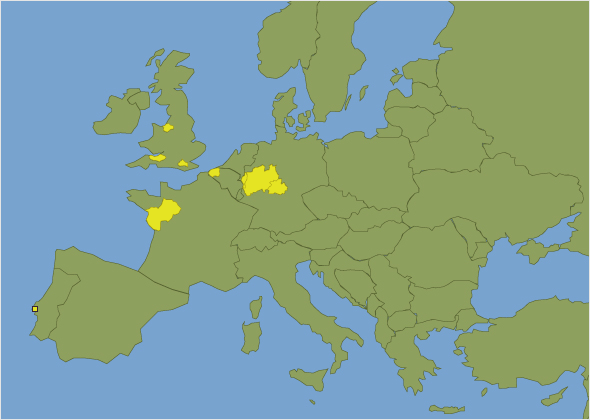Gardens are often places that invoke memories and celebrations. Our parks are full of memorials to statesmen, heroes, scientists, poets and artists that remind us of our cultural and political history. These are reminders of past events such as the battle (1815) of Waterloo (B), or the signing of the Magna Carta (1215) at Runnymede (UK). These can be of a heroic scale that overwhelms us, or one that is understated and appeals more to the subconscious. Most memorials are formal and are presented within a classicism of balance and symmetry; this produces sense of power over the viewer. Others are more subtle: a simple avenue of trees or a bench can commemorate a visit, an event, a birth or a death. Set in natural woodland is the powerful and subtle design of the Kennedy Memorial at Runnymede; the power is in the simplicity combined with the imagination and memory of the viewer, it is almost a non-design.
Most events or occasions are not recorded or noted for posterity. Meetings between industrialists, politicians, financiers, writers have often taken place in a garden. It becomes a setting, one which is comfortable and relaxed and suitable for informal discussions. Many family events take place in the garden and special events such as weddings are photographed with the garden as a stage setting. Part of the history of garden design is connected to stage design; the opening reception in 1661 of Vaux-le-Vicomte (F) became the setting for 8000 guests with a grand display of music, fireworks, plays and feasting. Parks and gardens have always been used as a place of entertainment and celebration. Many were laid out with ceremonial routes in mind, and there is compelling evidence that numerous 18th century gardens reflect Masonic symbolism of moving from the darkness and into the light.
In today’s terms, parks have become a place of resort, an escape from urban life and many have been built on the back of garden festivals. These events which started in Germany and Holland have been important steps forward in both the development of new parks and our thinking about what parks are and their sustainability. Festivals ranging from food and drink, to plants, to garden design occur in our parks. Particularly notable are the garden and flower shows that take place at Tatton Park (UK), Chaumont (F) and Schloss Dyck (D). These are celebrations of gardens, horticulture and design; they bring the public into direct contact with the latest design ideas, plants and technology. Similarly, our new urban spaces are being re-invented as people take back the streets of our town centres. Riverside promenades become places of entertainment, festivals and relaxation, while many town squares become places of temporary events. These range from art exhibitions and markets to large screen televisions for news or sporting events.
EGHN sees a need to recognise and promote the synergy between the different aspects of the garden; it is peculiar that people take such a low priority within our presentation and understanding of gardens. Similarly, the role of the garden is often undervalued in terms of its contribution to society. It is our system of measuring and accounting that does not accommodate for more abstract values. The approach to understanding gardens needs to be explorative, open and questioning. Only when our enquiry is comprehensive and complete, will we begin to understand the true worth of our parks and gardens.
Author:
Prof. E M Bennis, Manchester Metropolitan University
for EGHN, 2006
References:
(i) Dahl, Jürgen The Curious Gardener, Timber Press, Portland, USA 2004. Originally published as a revised version of three works by Dahl as Der Neugierige Gärtner (2002)
(ii) There are many books written on this garden. Particularly useful is Lablaude, Pierre-André The Gardens of Versailles Zwemmer, London 1995 (English edition); Éditions Scala, Paris 1995 (French edition)
(iii) This was originally published in German in 1913, followed by the English edition in 1928. Modern reprints are available.
(iv) Taylor, Patricia Thomas Blaikie, The ‘Capability’ Brown of France Tuckwell Press, Scotland 2001
(v) Valéry, Marie-Françoise Gardens in France Taschen, Köln 1997 p198
(vi) Ibid. p190
(vii) Jellicoe, G and Jellicoe, S The Landscape of Man Thames & Hudson, London 1975 p228
(viii) Jellicoe, G et al The Oxford Companion to Gardens Oxford University Press, 1986 p122. This section was written by Dr Florence Hopper. Also refer to Plant Hunters.
